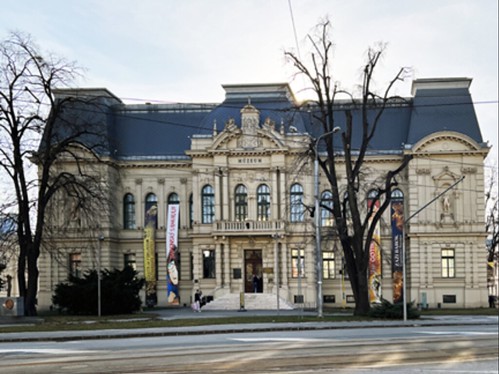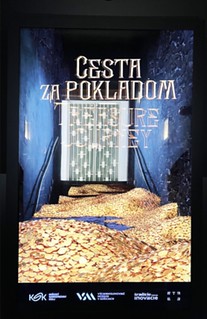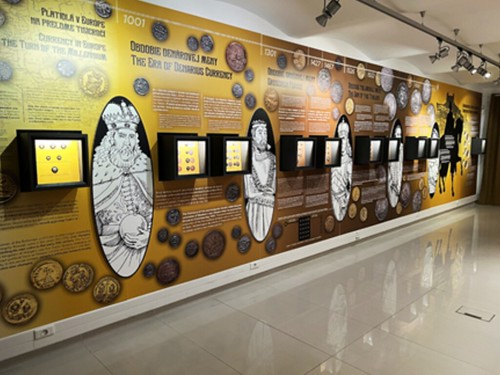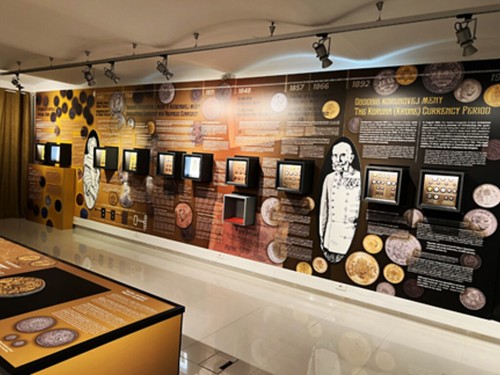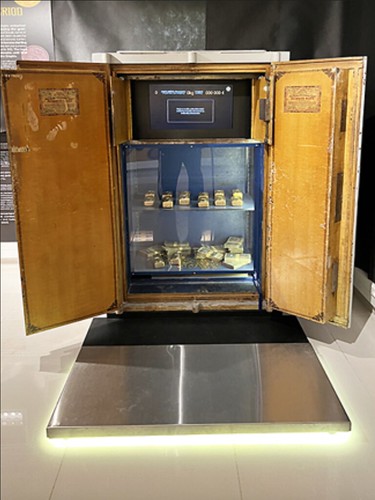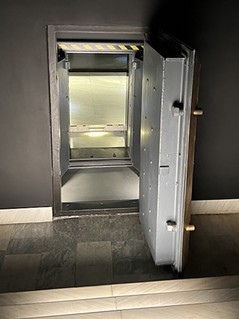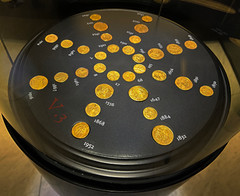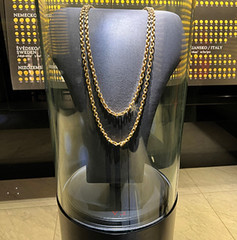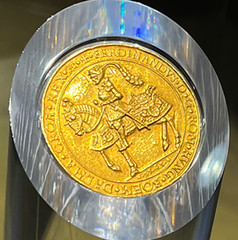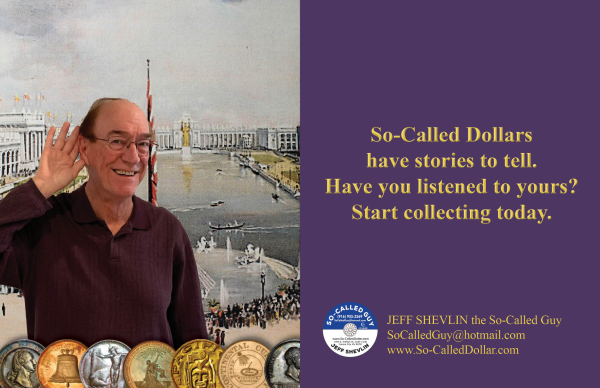
PREV ARTICLE
NEXT ARTICLE
FULL ISSUE
PREV FULL ISSUE
THE NUMISMATOURIST VISITS KOSICENumismatourist Howard Berlin recently visited Košice in Eastern Slovakia and submitted the following report about the numismatic aspects of his trip. -Garrett I recently visited the city of Košice in eastern Slovakia. When my future wife and her family lived in the former Czechoslovakia before immigrating to the U.S. in 1969, her two brothers attended higher education institutions in Košice. When visiting Košice, one of the first things tourists read about the city is its gold treasure. Housed in the East Slovak Museum, the permanent exhibition is considered the largest and richest find of gold coins in Slovakia, and is one of the world's largest hoard of gold coins. It was discovered on August 24, 1935 in a copper casket during the reconstruction of a building a few streets away from the museum.
The first room presents information about how metals were mined and coins were made in medieval times. Additional panels give details about three additional hoards besides the famed gold treasure. The 1973 Bohdanovce Treasure was found in a ceramic jug, consisting of 12 ducats, 196 thalers, 8 half-thalers, and one 3 groschen. The youngest coin is a 1597 ducat of King Sigmund Báthory of Transylvania. Throughout the exhibition, all explanatory text is given in both Slovak and English. The Levoca House Silver Treasure (2018-19) was found in the basement of a house near the museum. It consists of 606 silver coins from 15th-17th century. The third hoard is the Obišovce Treasure of the One-Eyed Priest (2020). Found in a cracked jug of a church were 550 coins of which 484, copper polturas from the city of Banská Štlavnice along with 11 mining tokens. Among the copper polturas are rare specimens minted in 1687. The second room's exhibits form a timeline of major numismatic events of the region. Starting with European coinage at the start of the millennium, the timeline progresses with periods for the introduction of the denarius (1001), groschen (1301), thalers (1526-1553), Hungarian Coins of Maria Theresa (1740), Convention and Viennese currency (1754), Revolution and Monetary Disruption (1848), Federal Currency and Austrian Currency (1857-1866), and ending with the Koruna (Krone) Currency Period (1892-1912). With each era, representative examples of gold and silver coins are displayed. Walls that display the numismatic timeline from the start of the millennium to the Koruna (Krone) Currency Period. At the conclusion of the numismatic timeline, there is a safe containing 12 gold bars, coins, and bundles of old Austro-Hungarian currency. A scale and video display allows visitors to weigh themselves and the equivalent “gold value” is then displayed. The final room, the highlight of the exhibition, is the showcasing of the hoard's 2,920 gold coins from 16 different European regions in a bank vault-like room. Visitors have to enter through a bank vault-like door. Once inside, the many coins are spread out over panels, which are divided by region, and each coin is numbered for identification.
Even though the exact year the hoard was hidden is not known, the newest of the coins (1679) dates back to the reign of the Holy Roman Emperor Leopold I, suggesting 1679 or shortly after. The gold coins from Spain. 32 coins from mixed regions are displayed separately in a decorative pattern. In addition to the 2,920 gold coins, the hoard includes three medals and a 84-inch (2.14m) long gold Renaissance chain. In all, the Kosice Gold Treasure totals 25.3 pounds (11.5 kilograms). The Košice Gold Treasure exhibit is very well curated and should not be missed when visiting Košice. My only complaint is that the black walls and minimal lighting in the pathways make it difficult for one who walks with a cane and has trouble seeing in low light levels. Also, the entrance to the gold treasure is through a low vault door. The museum, located at 2 Námestie Maratónu mieru (Peace Marathon Square), is open Tuesday-Saturday from 9am to 5pm. Admission to the museum is €5.
Wayne Homren, Editor The Numismatic Bibliomania Society is a non-profit organization promoting numismatic literature. See our web site at coinbooks.org. To submit items for publication in The E-Sylum, write to the Editor at this address: whomren@gmail.com To subscribe go to: Subscribe All Rights Reserved. NBS Home Page Contact the NBS webmaster 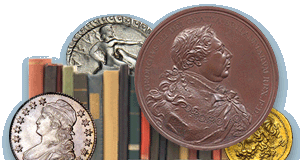
|
